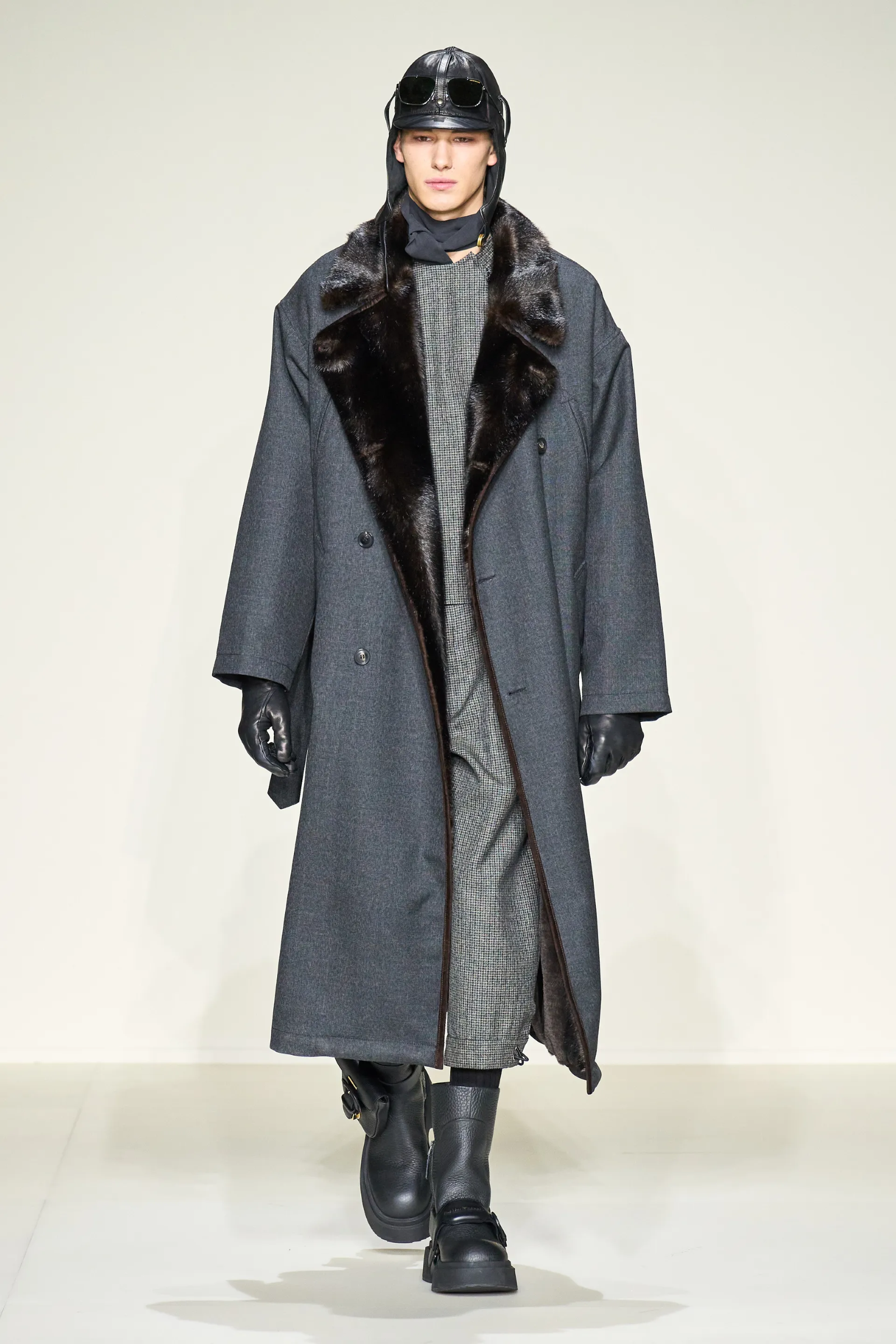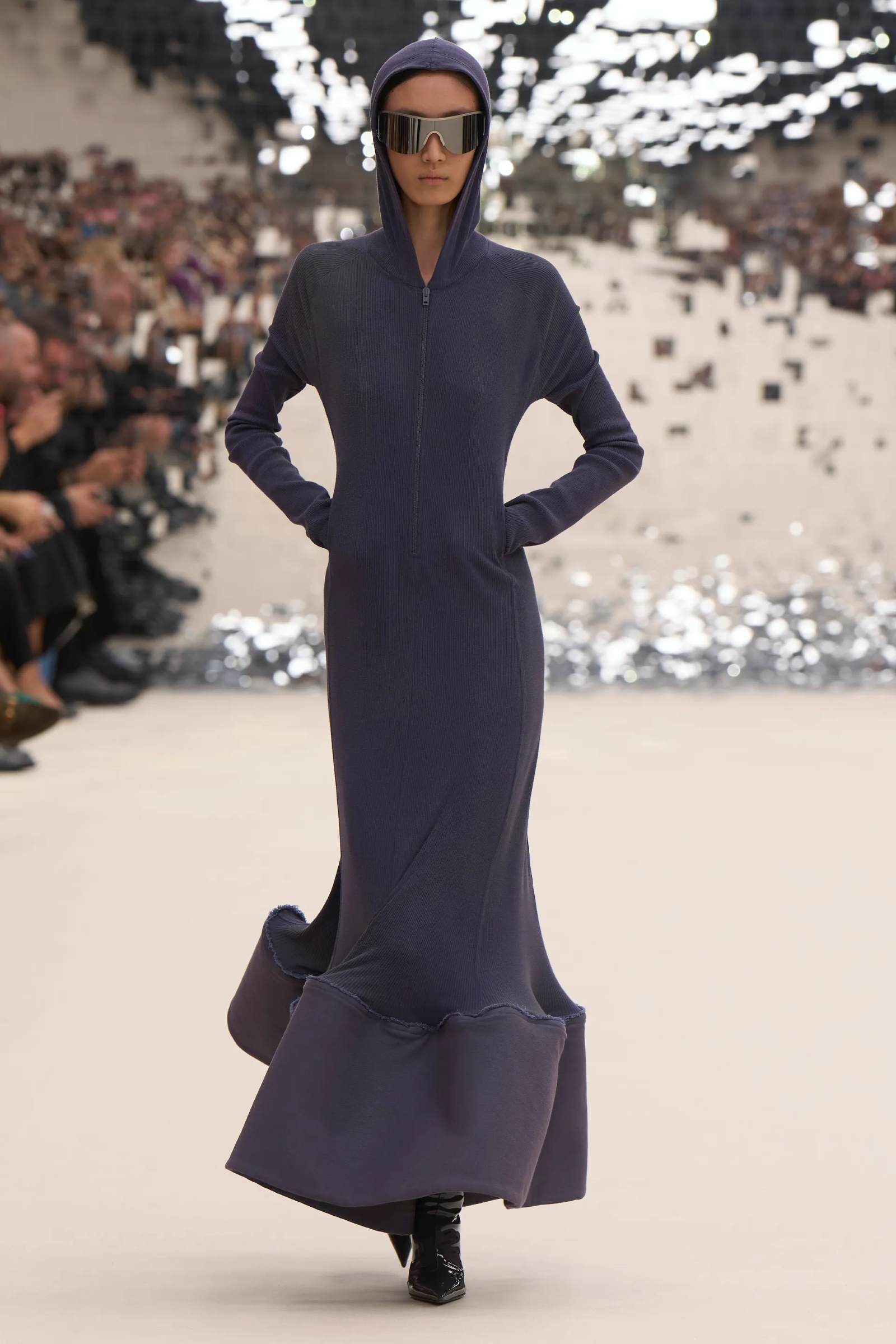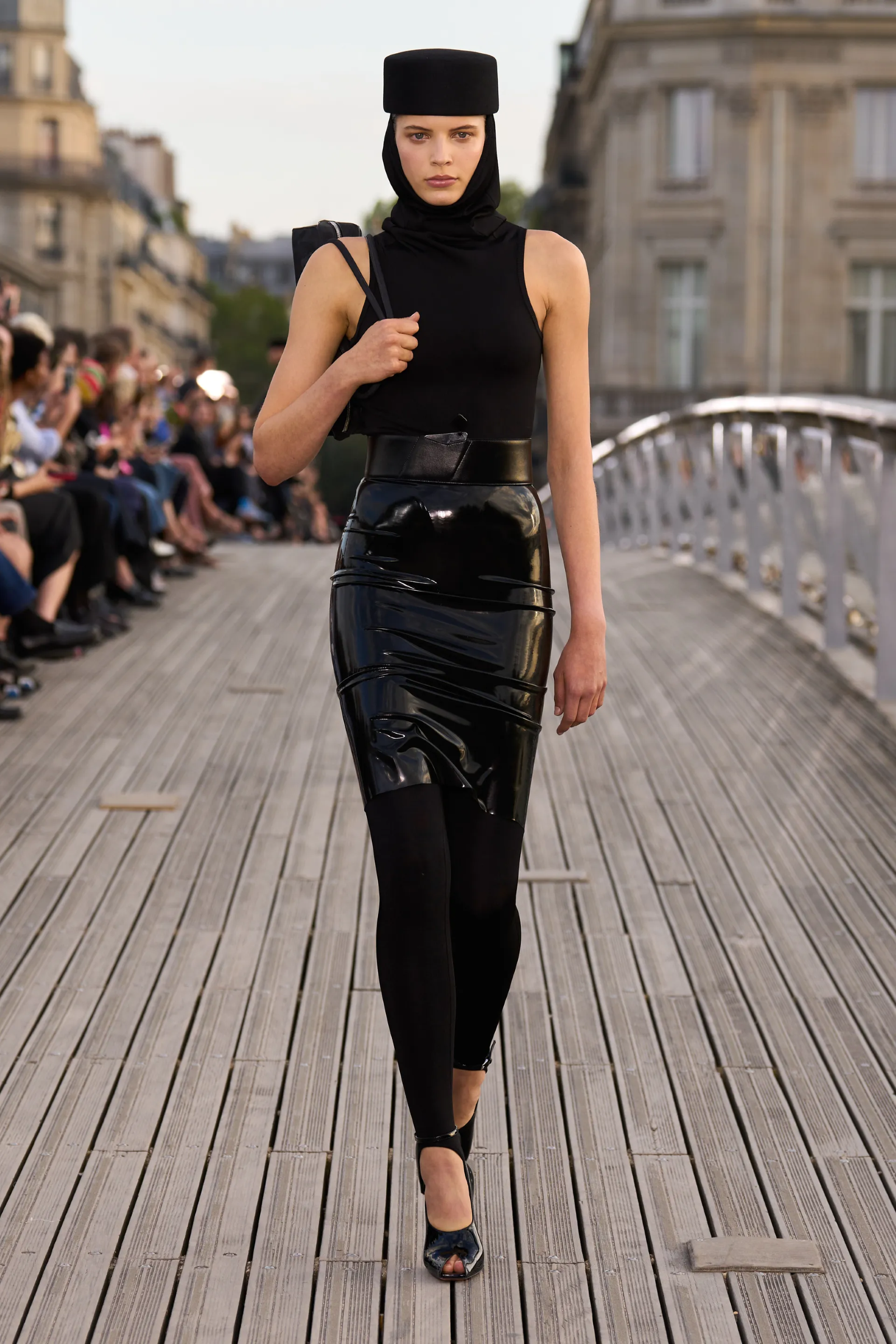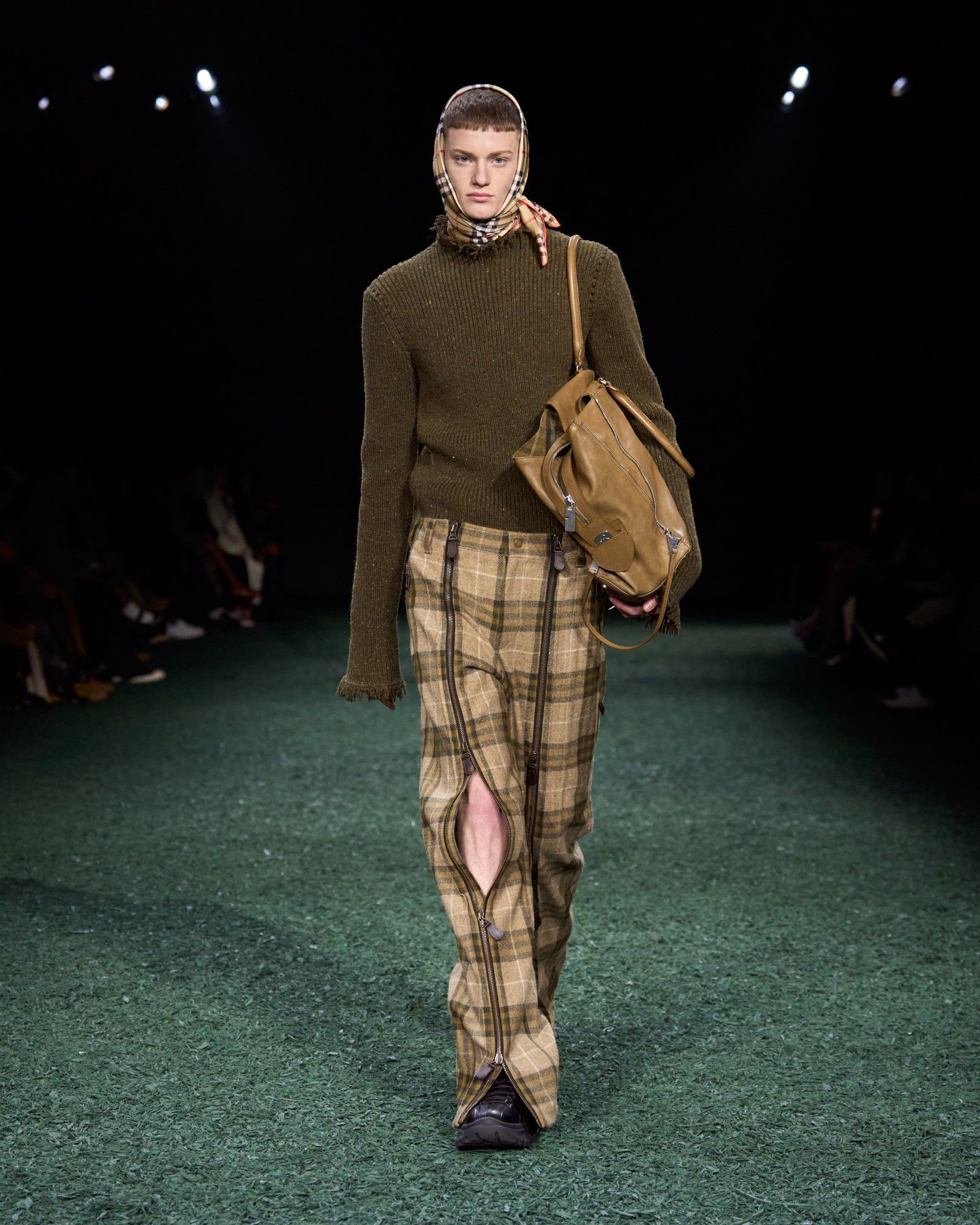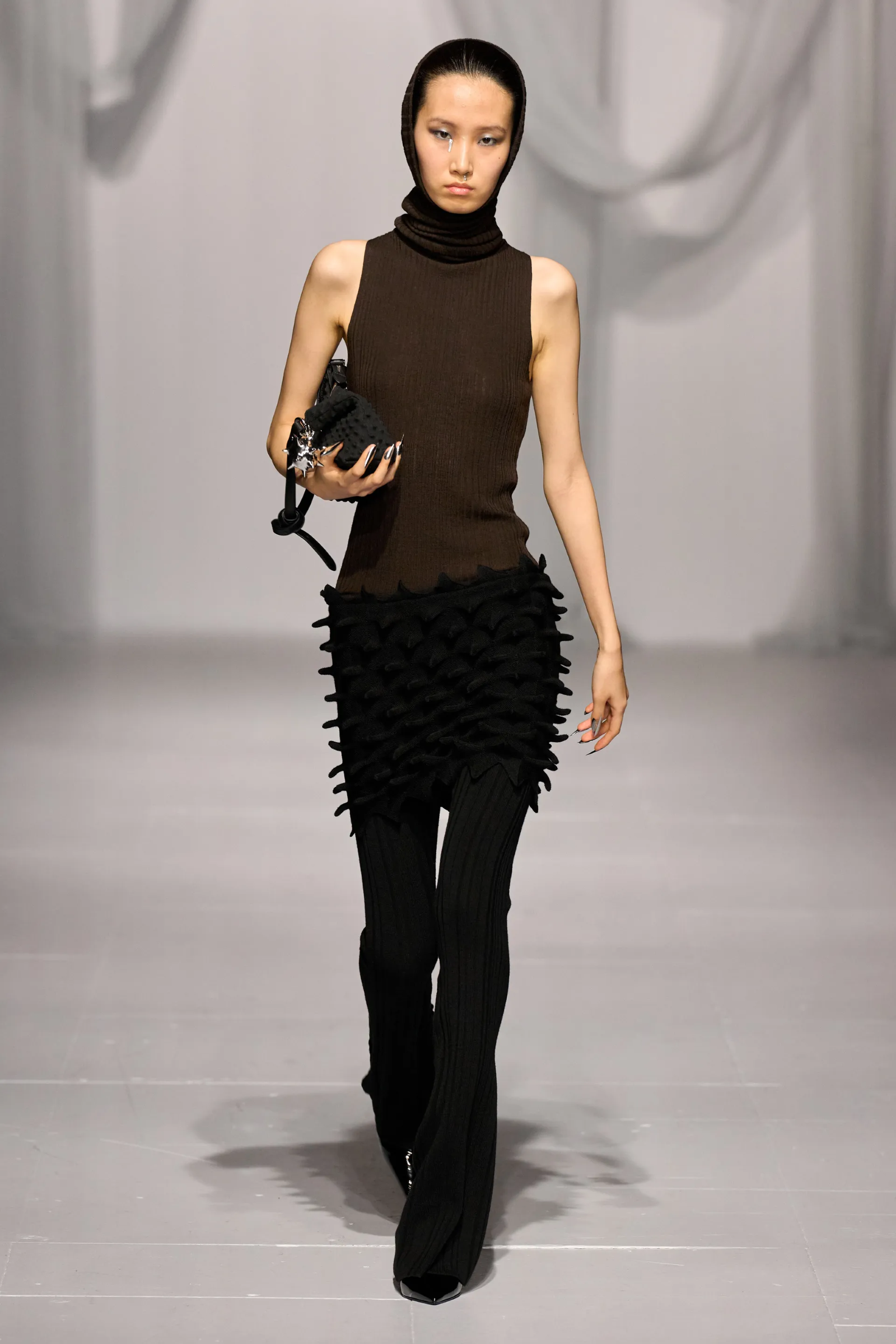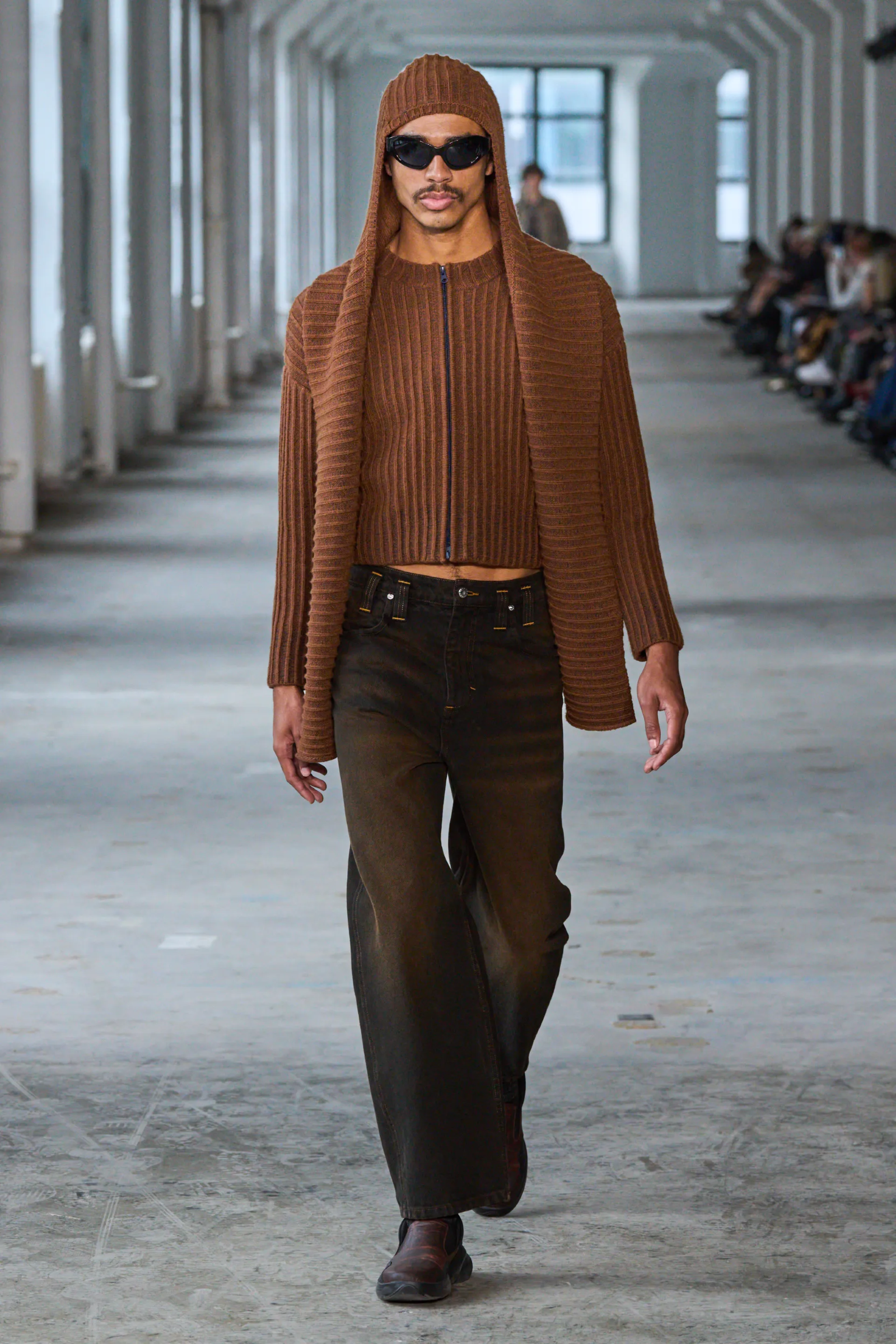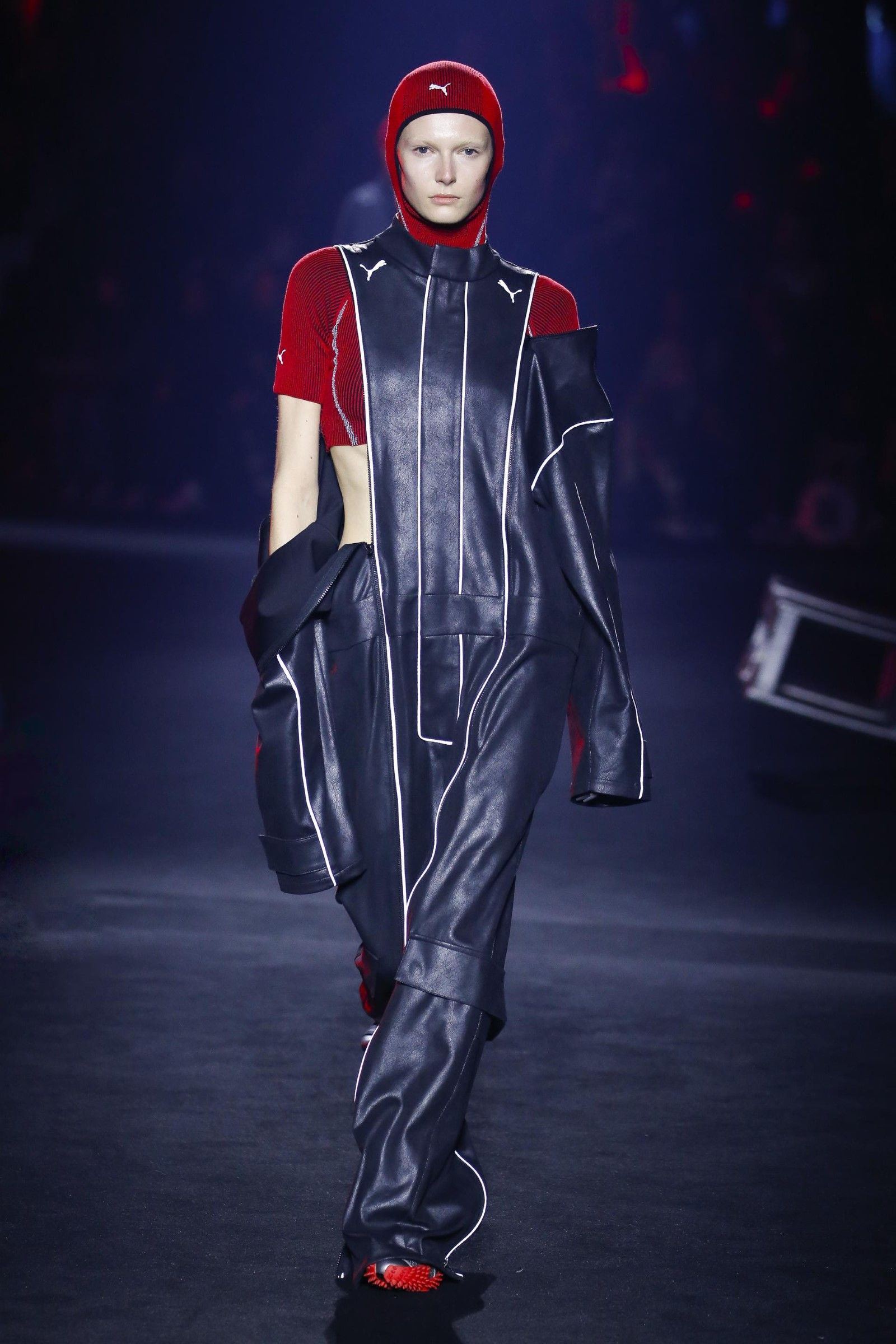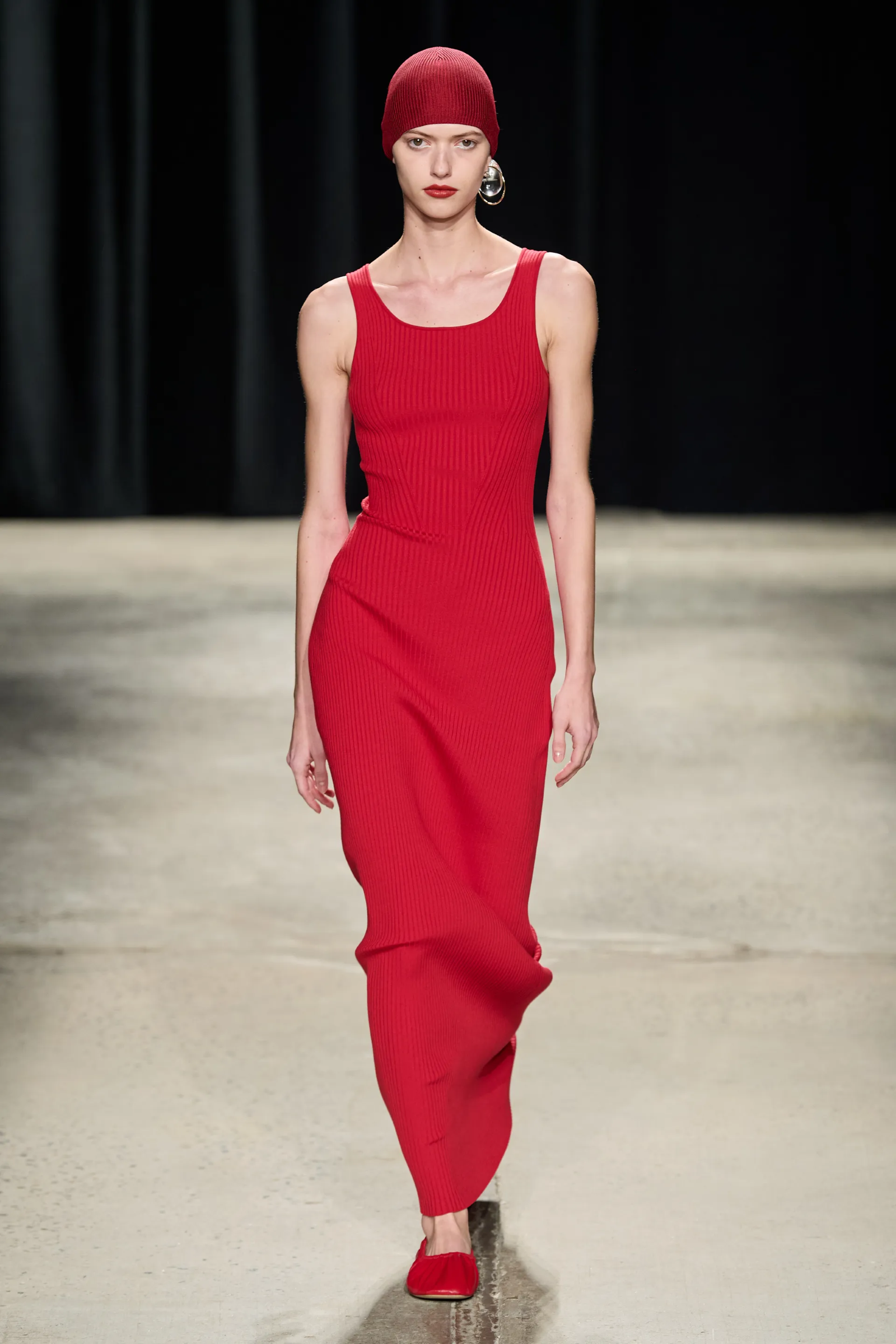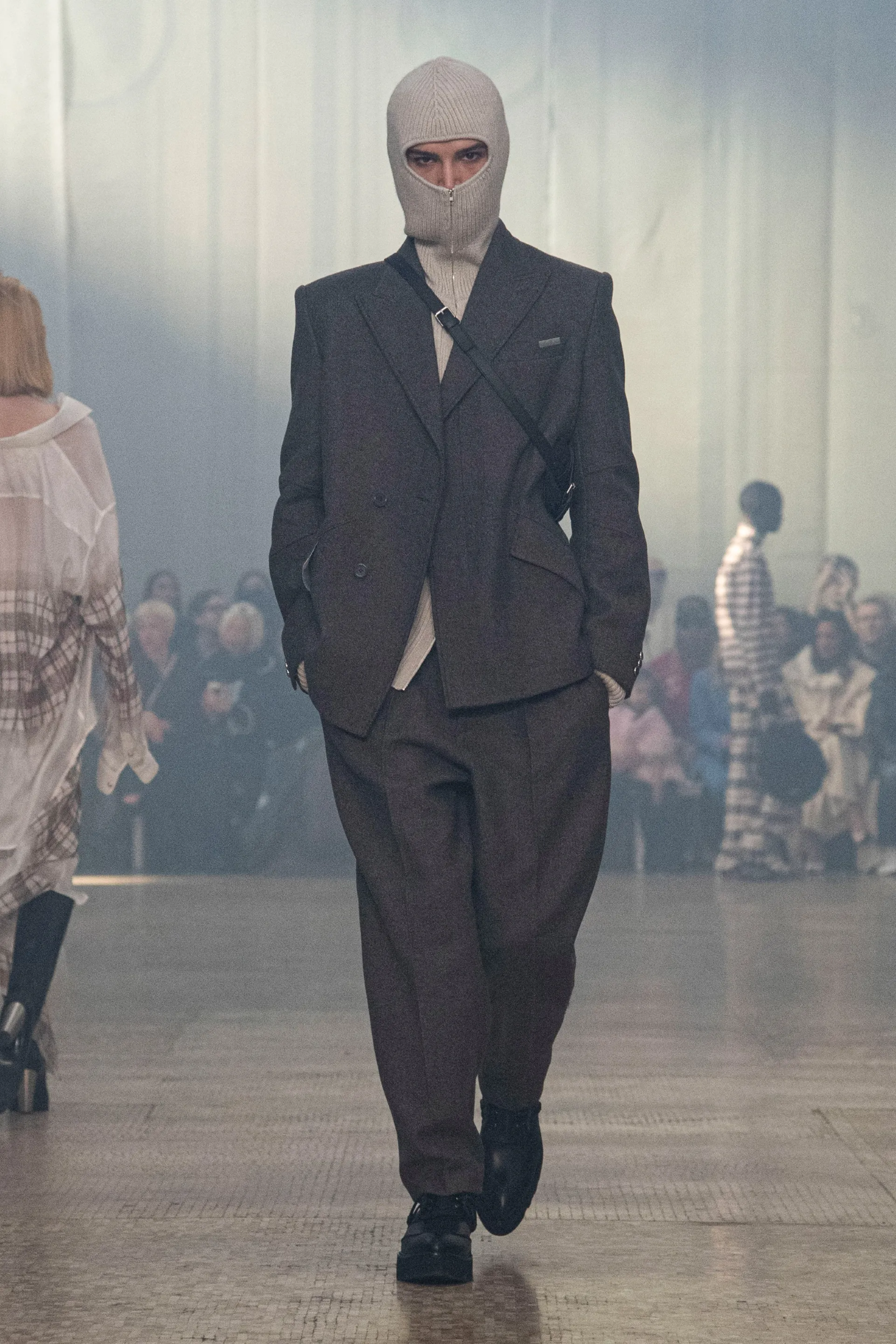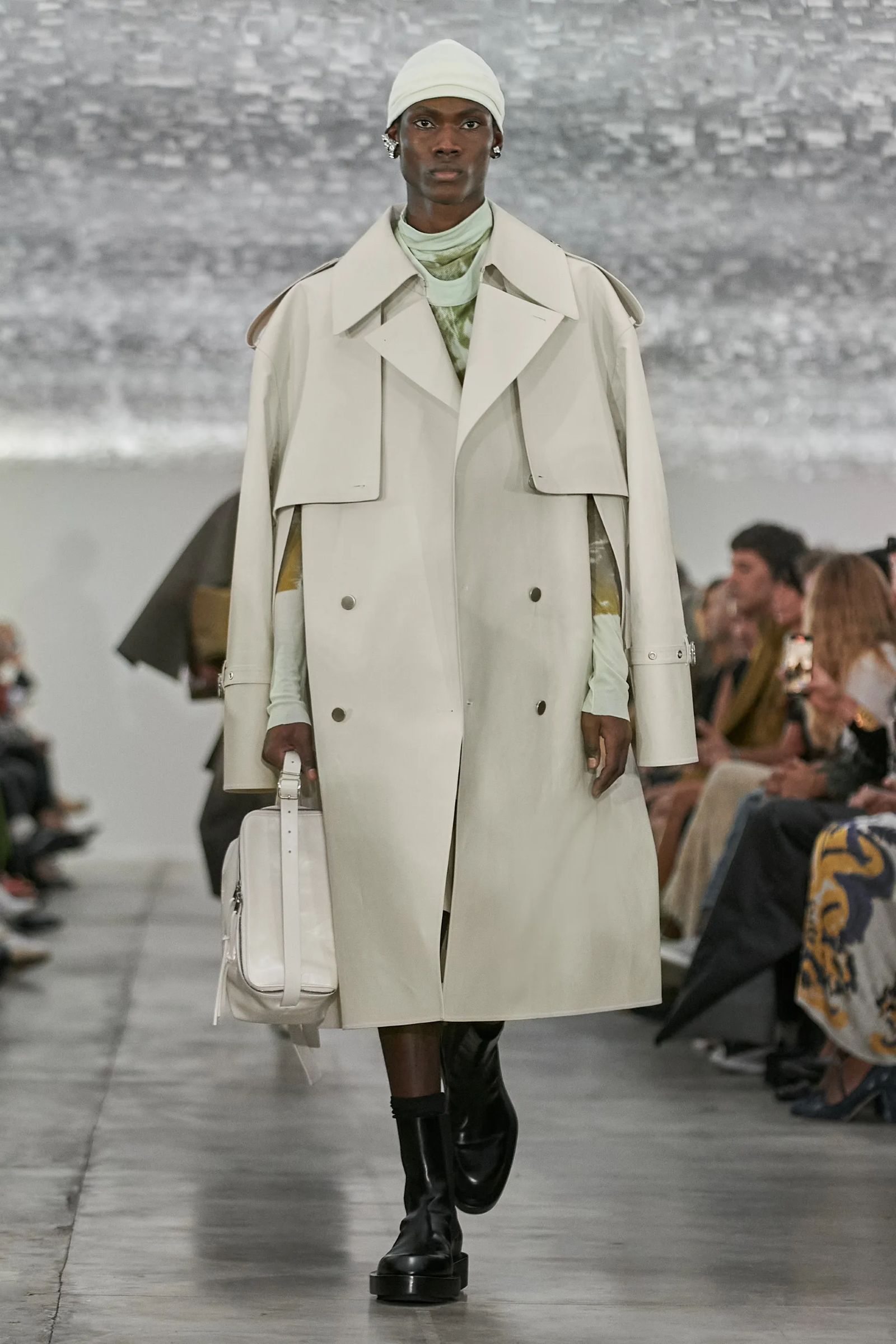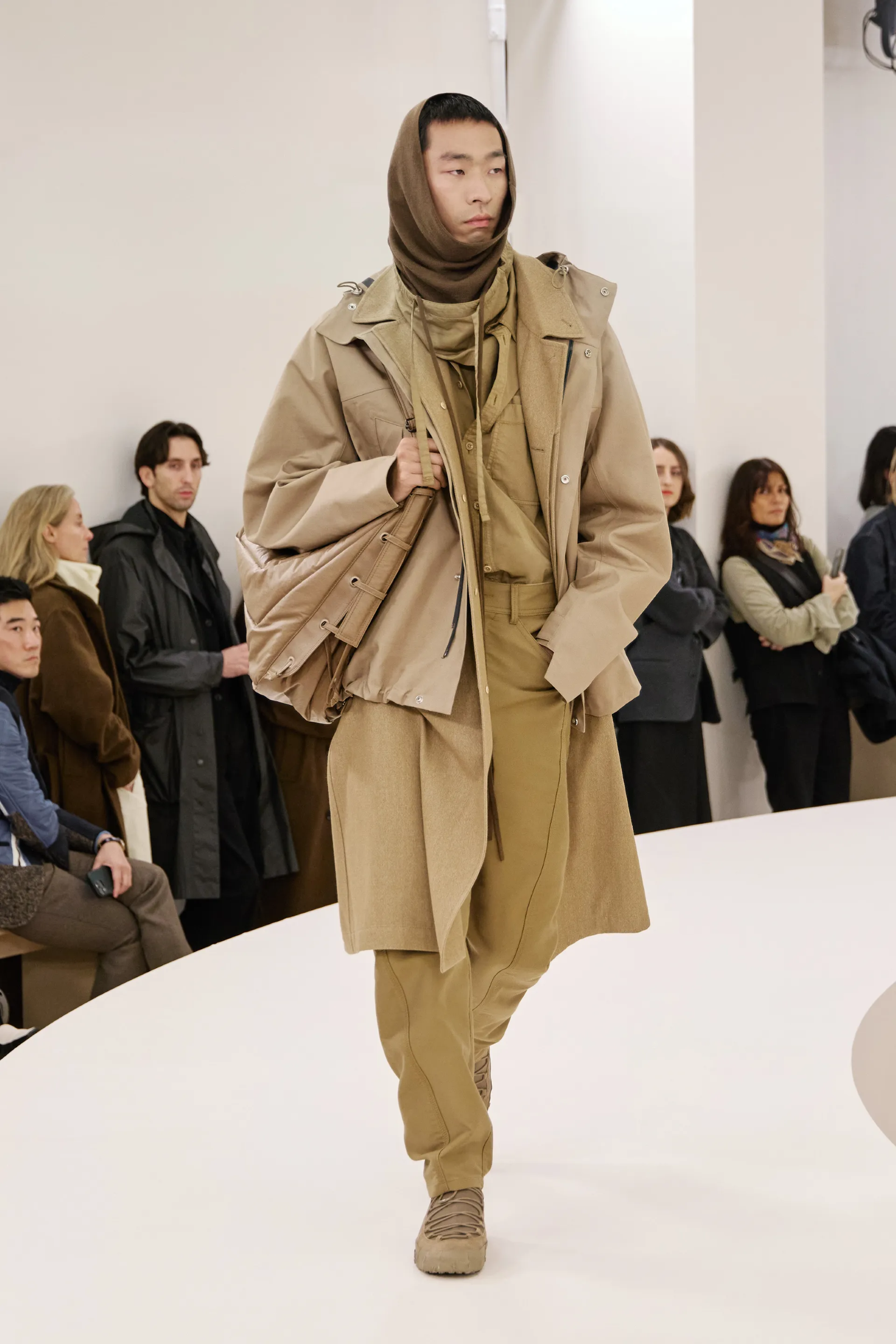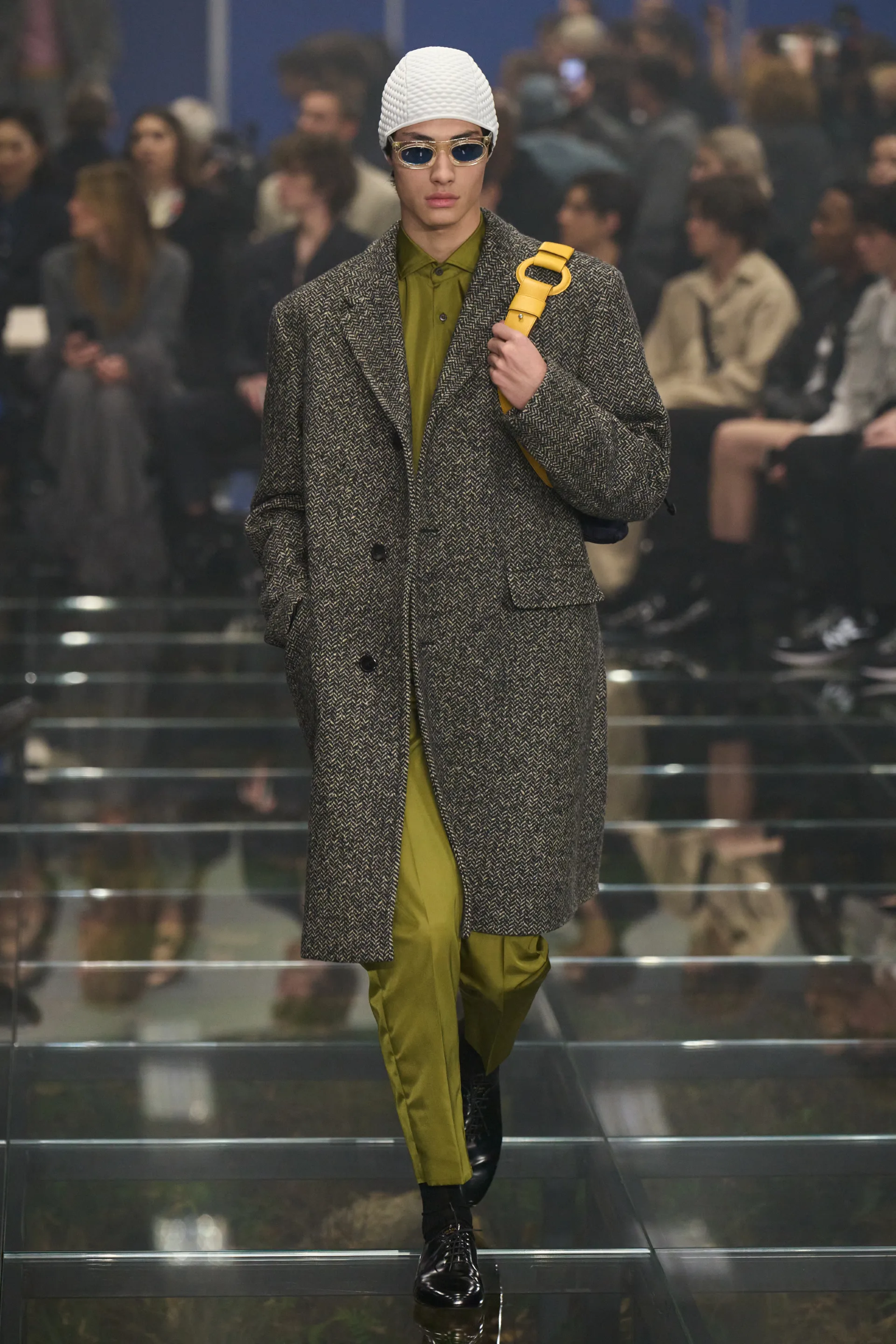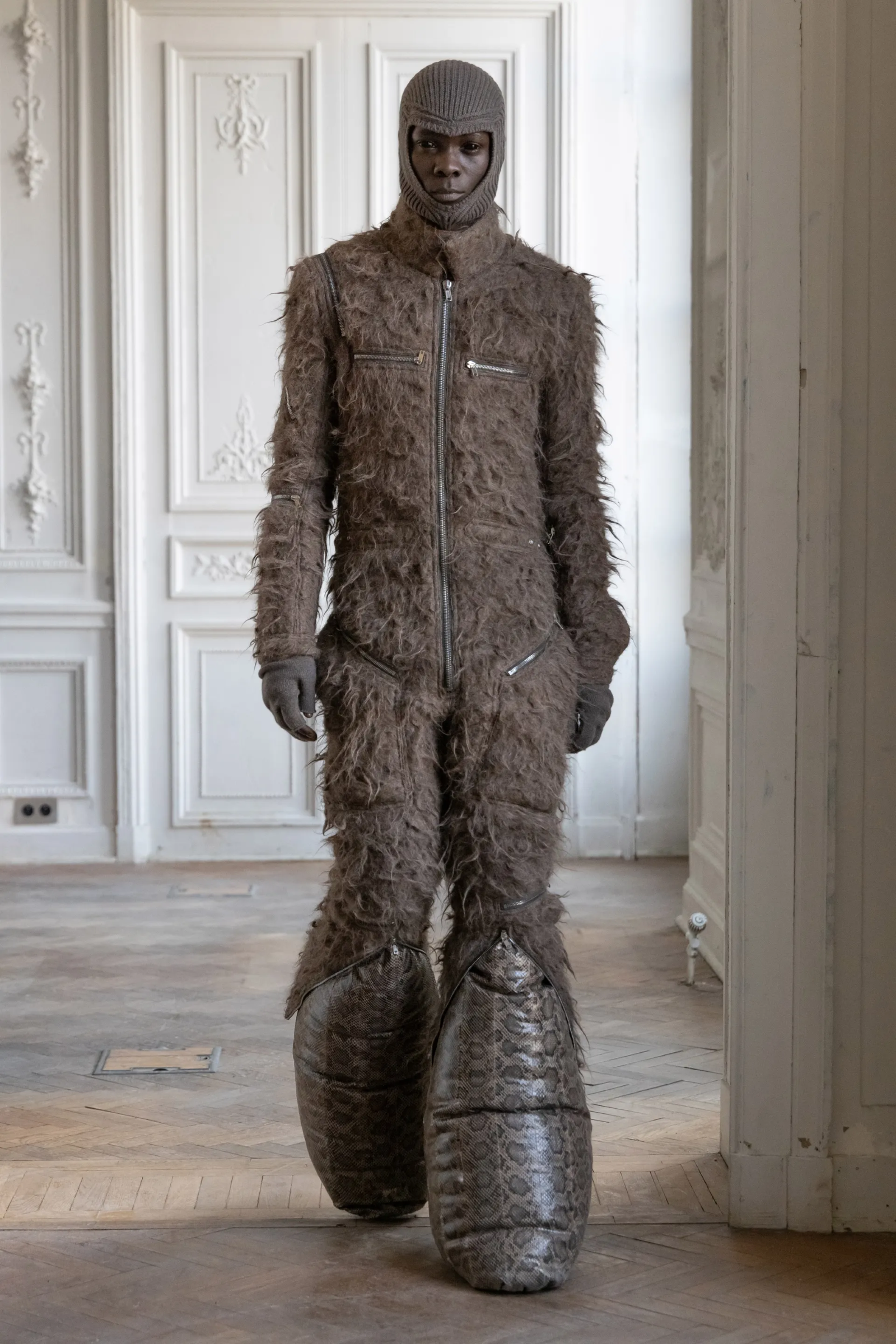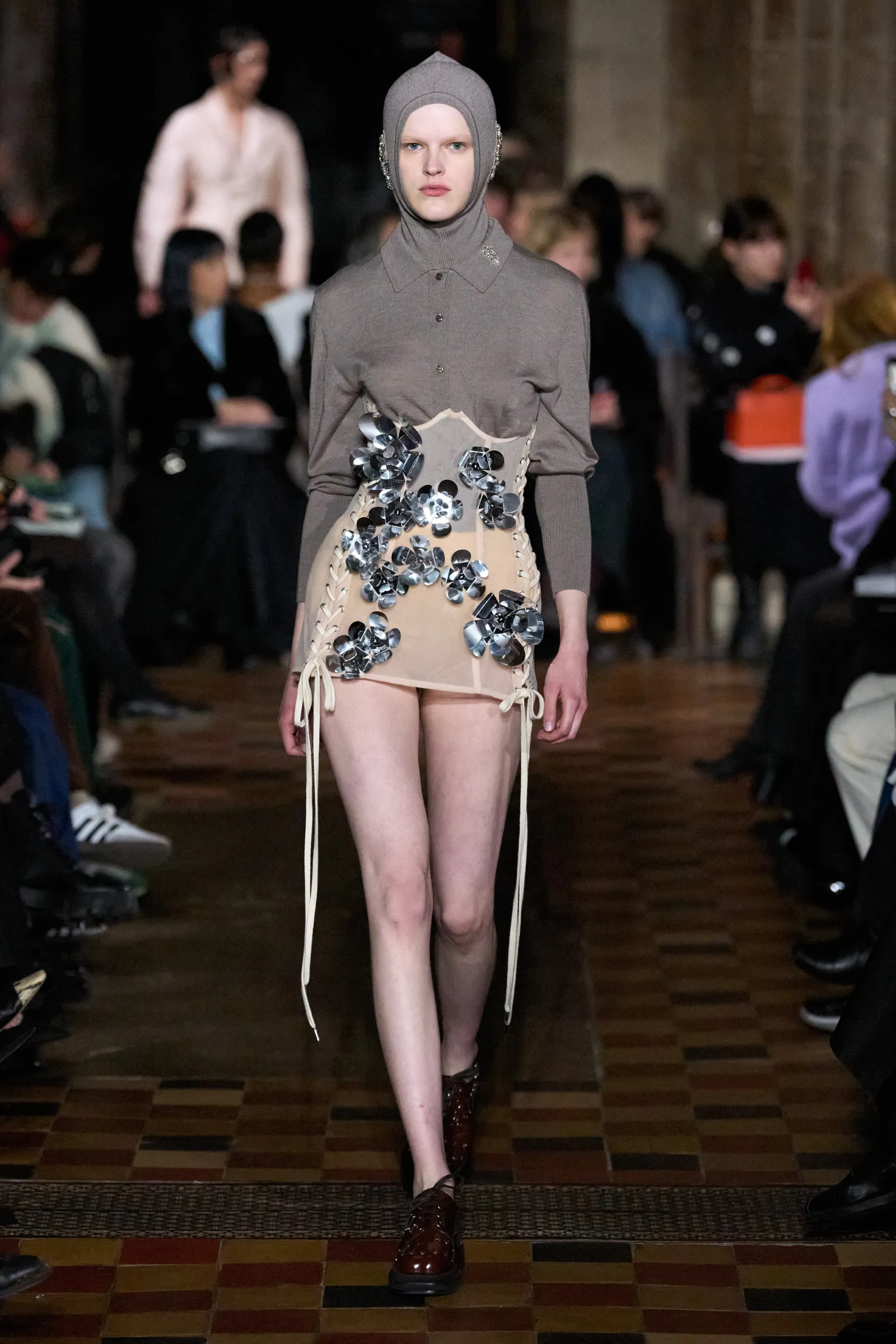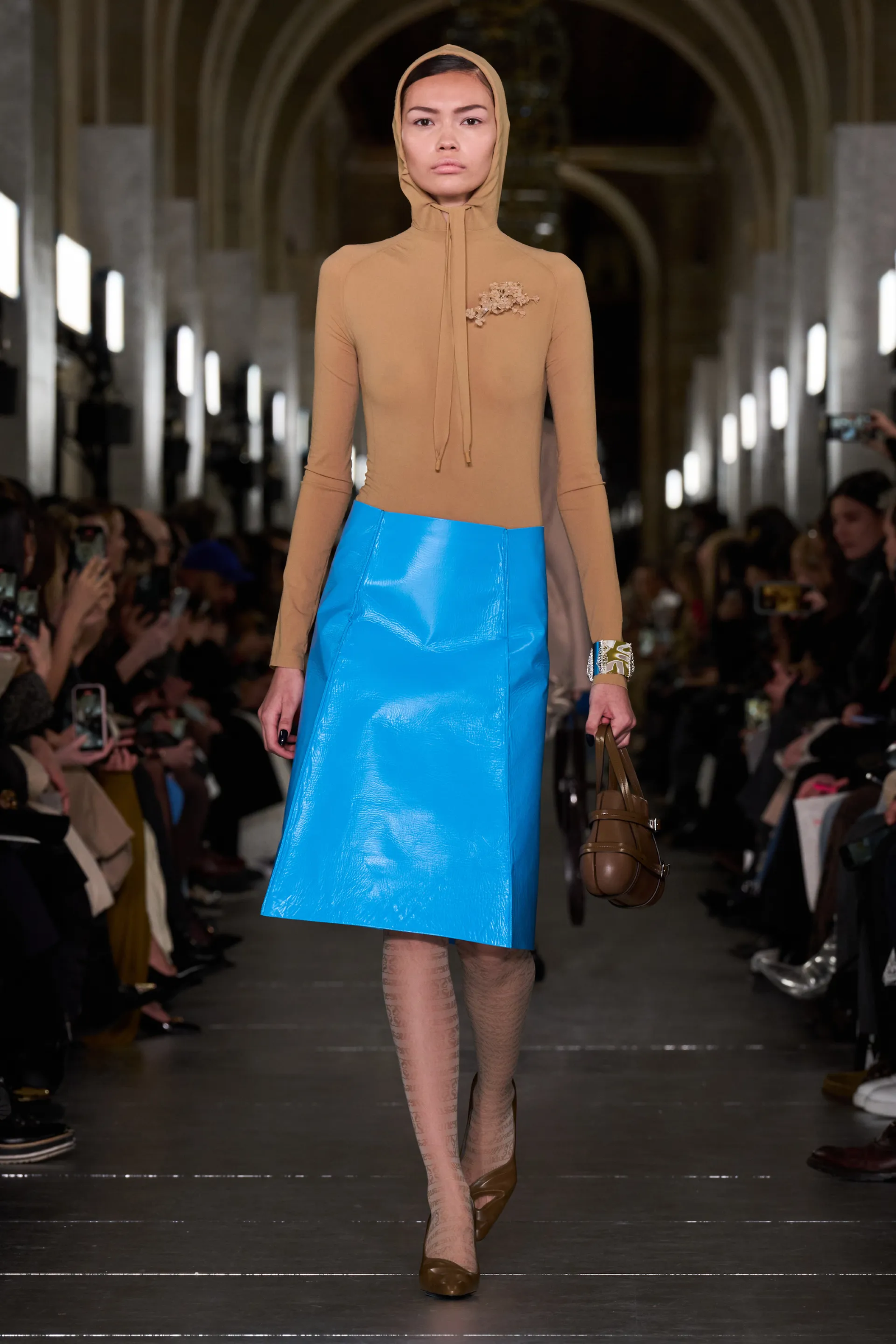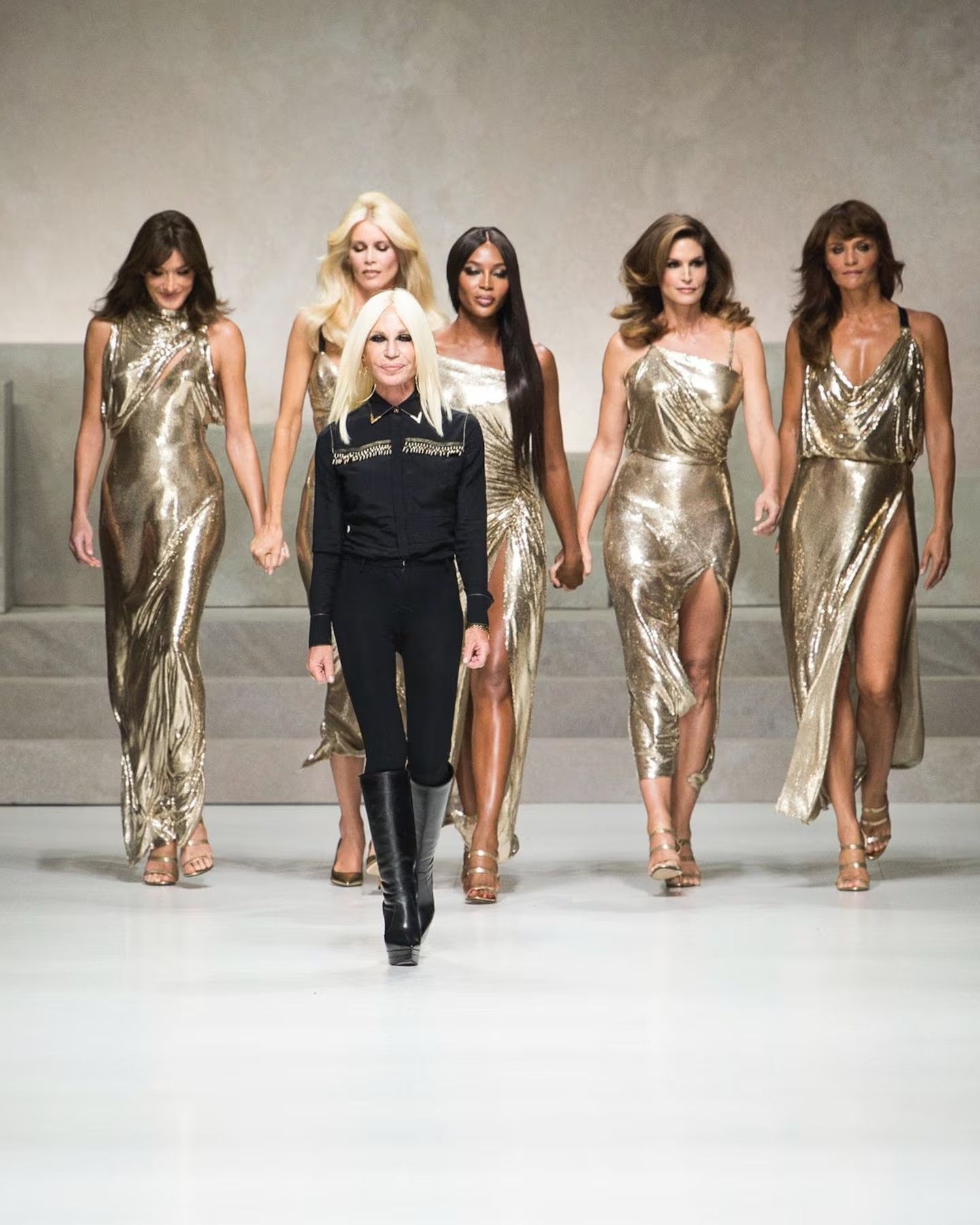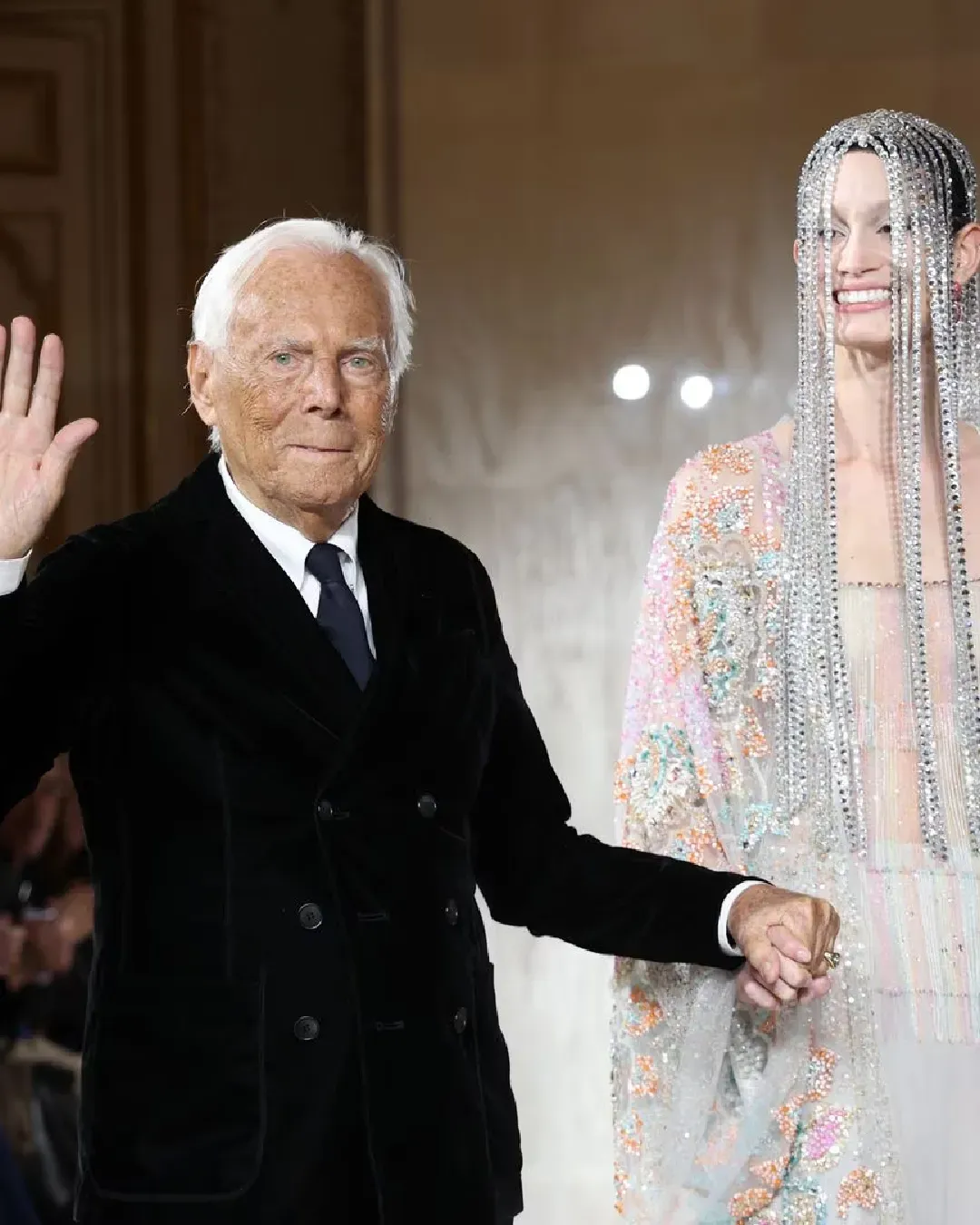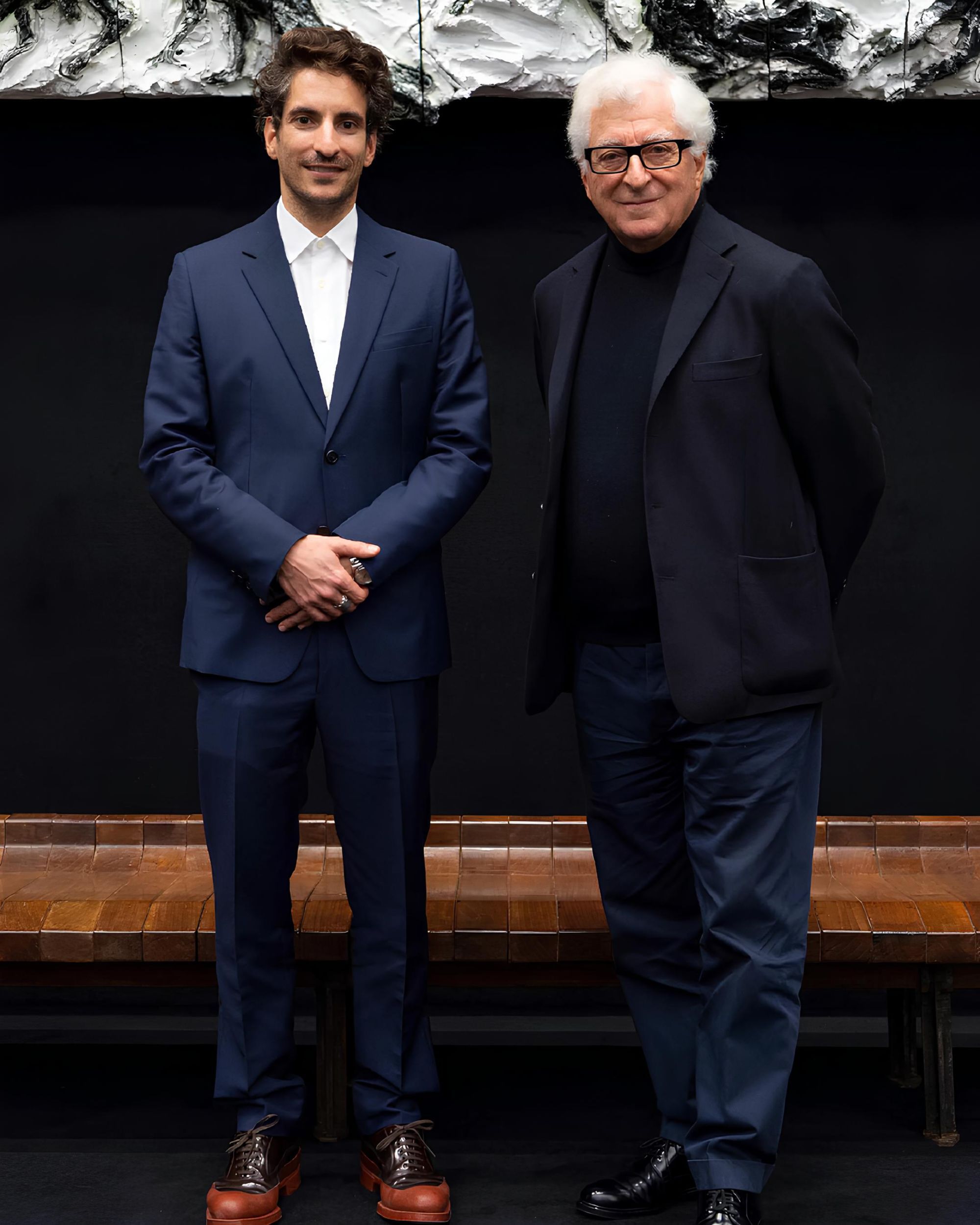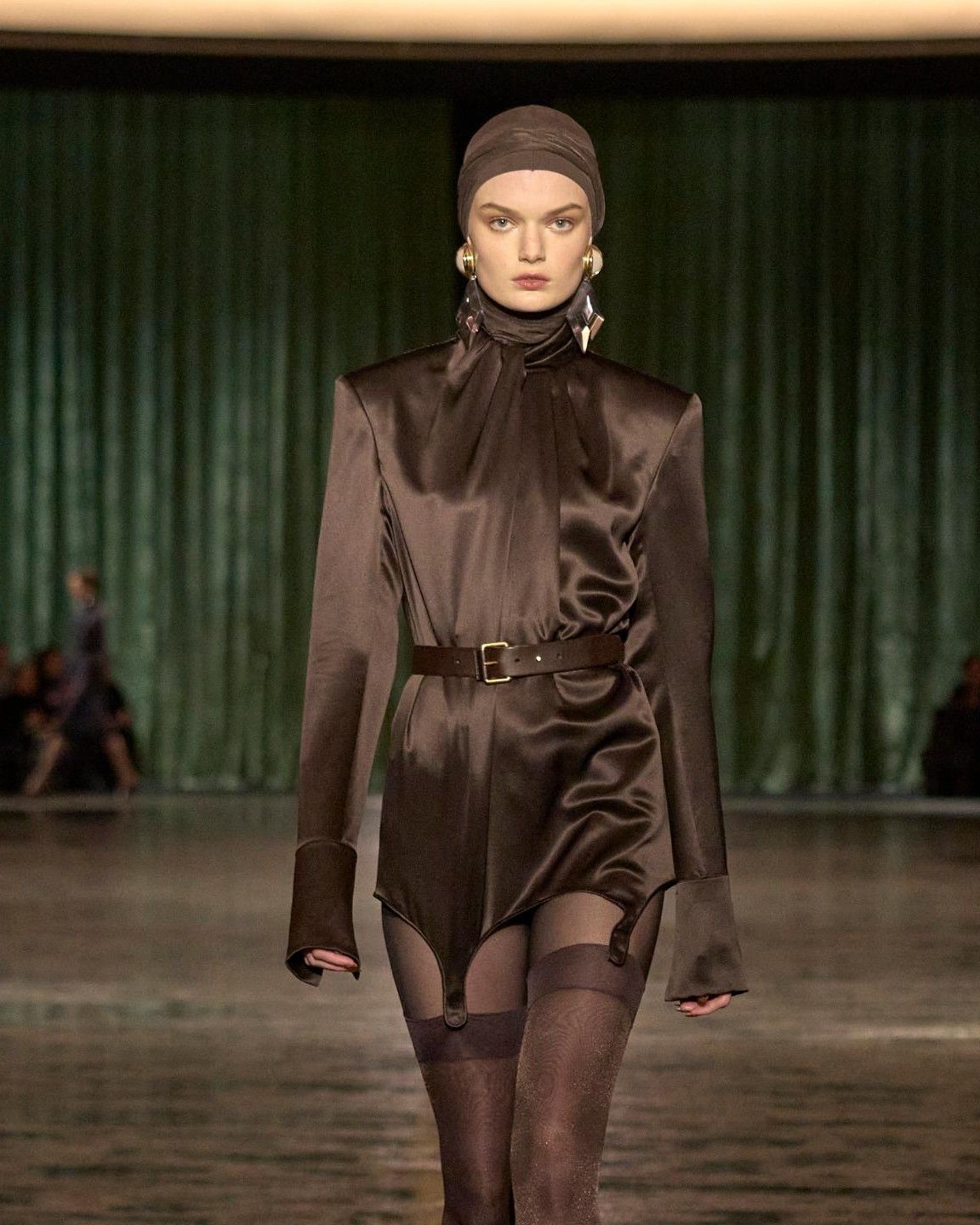
2024 is the year of the bathing cap But how will those with long hair do?
What do the aviators of the Second World War, the Death from The Seventh Seal by Bergman, Olympic swimmers, and your grandmother in the bathtub in the '60s have in common? They are all wearing some form of headgear – and they all seem to have been present on the mood boards of designers this winter season, who sent a series of more or less enveloping, more or less synthetic, more or less 1920s-inspired headgear down the runway, transforming quite radically and unexpectedly the silhouette of their models. Precisely what Anthony Vaccarello did yesterday for his FW24 Saint Laurent show, in which a silhouette with a vague 1940s vibe, fully executed on sheer chiffon and complete with a headpiece, was repeated for 48 different looks. Setting the standard, however, was, as often happens, Prada, which a month ago sent office looks down the runway decorated with swimming caps and slippers, something similar (and this time really as a vintage reference) appeared at the Burberry, Dior Homme, and Fforme shows. Similar styles, more covering, were seen on the runway at the Amazing Mostro Show by Puma and also at Rick Owens, Helmut Lang, Tory Burch, Chet Lo, and Simone Rocha – while at Eckhaus Latta the effect was achieved through a pink sweater, at Lemaire through ear-flap hat. Some months earlier, during the last SS24 season, a similar headgear was seen on the runways of Emporio Armani, Balenciaga, Jil Sander, Alaïa, Dion Lee, Acne Studios, and even Saint Laurent had brought these caps to its latest show in tribute to Amelia Earhart. But why suddenly has this deluge of snug caps rained down on our heads (literally)?
At a first analysis, we need to deconstruct the trend's evolution. As mentioned earlier (albeit en passant) the first signs of the appearance of these head coverings came about last year, multiplying over the course of the seasons: we could identify the ground zero as Emporio Armani's aviation-inspired collection, although not all subsequent appearances of that silhouette directly derive from it. In several other cases, the followed inspirations have been disparate: aviators for Armani and Saint Laurent; 1920s looks for Dior Homme, Alaïa, and Fforme; technical balaclavas for Puma, 1960s-style bathing or swimming caps for several others, and finally, as mentioned, the transformation of the classic hoodie which is altered to ensure the look possesses its own aesthetic unity even with the hood pulled. At Burberry, the cap effect was given by a scarf tightly wrapped around the head; at Helmut Lang, instead, the cap took the form of a wool hood with a zipper; at Eckhaus Latta, a simple sweater; at Balenciaga and Dion Lee, it was a proper hoodie deliberately narrowed, which created different effects depending on the case: eccentric and futuristic for the former brand, sensual and sporty for the latter. What does this mean? That the trend we are talking about does not concern an accessory, such as a type of boot or hat, but a silhouette and a styling solution, and its interpretations correspond to the different ways of implementing these solutions.
The discussion about the silhouette is not secondary: the "distinctive hat" has certainly been a widely used device in the last four seasons – something also noticed by The Cut, which spoke of "funny little hats" seen everywhere in New York (but also in London) in the past fashion week days. The task of the hat, today as in the past, has always been to give character to ordinary outfits, and hats are part of those easily accessible accessories that bring much prosperity to sales. Covering the head entirely with a snug cap, whether it's a balaclava as with Rick Owens or a full-length dress with a hood as from Acne Studios, means altering the silhouette in a key area, bringing a sense of diversity to the rest of the look which, at that point, may even be slightly more commercial but endowed with an eccentricity that feels very avant-garde. The breadth of references to historical dimensions, the campiness of 1960s bathing caps, and flapper hats from the jazz age passing also through athletics make the use of caps almost inviting – it remains only to understand whether this trend will ever find a translation outside the runways: how many are willing to ruin their hairstyle in the name of fashion?










































